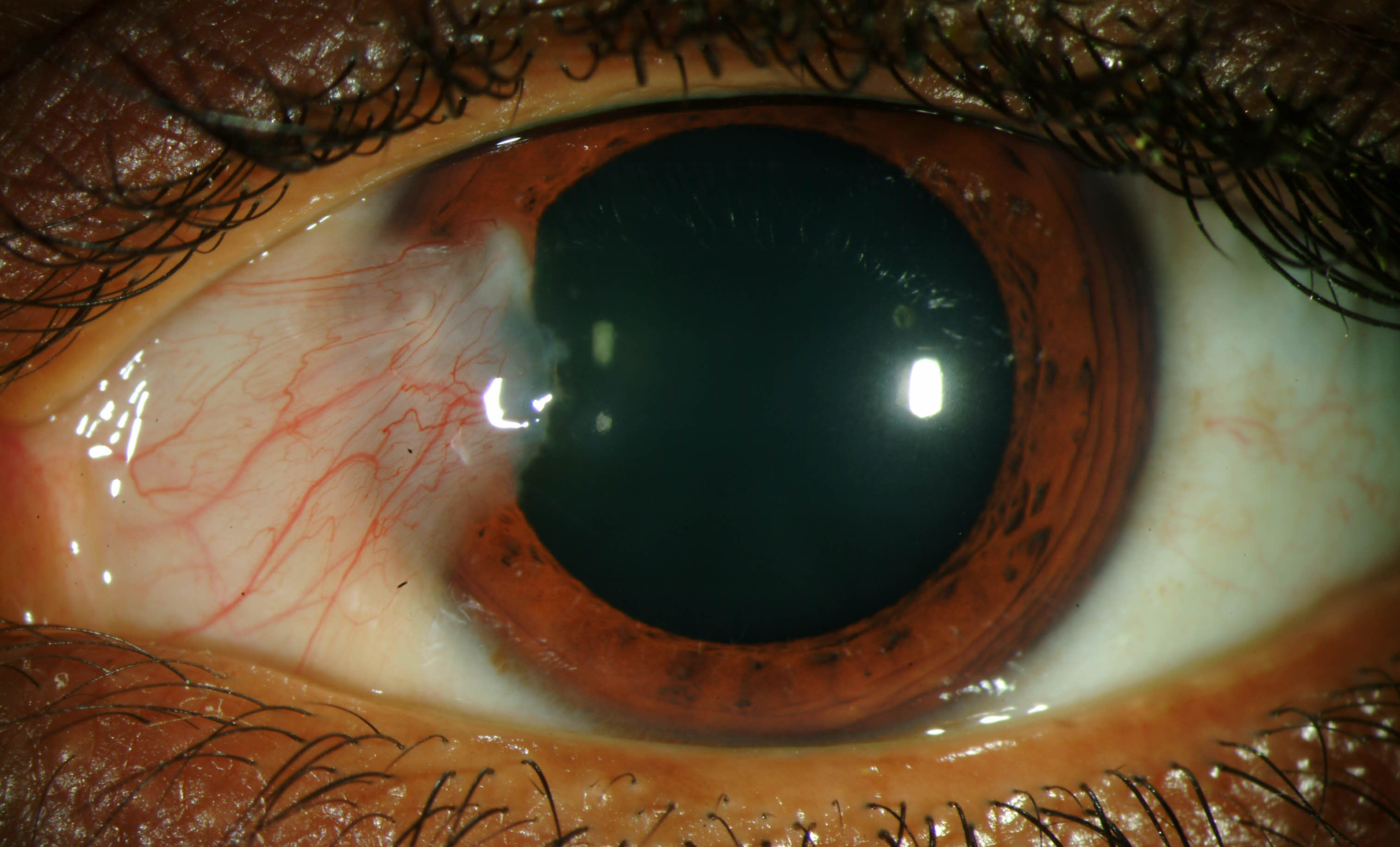 |
| Pterygium length, width and area were found to predict optical changes, while thickness may serve as a clinical indicator of eventual recurrence. Photo: Christine Sindt, OD. Click image to enlarge. |
Pterygium, a benign fibrous conjunctival growth often associated with sun exposure, distorts the cornea and induces astigmatism as it invades the corneal surface. According to a recently published study in Scientific Reports, the effects of pterygium on corneal characteristics are significant.
This study was among the first to compare higher-order aberrations (HOAs) in pterygium eyes with normal fellow eyes. The study included 59 patients with nasal pterygium. Here are some of the study’s findings:
- Pterygium significantly increased WTR corneal astigmatism and corneal irregularity, inducing trefoils, horizontal coma and quatrefoils.
- Pterygium-induced corneal astigmatic/irregularity values and horizontal trefoil/quatrefoil were associated with the area of the pterygium.
- Pterygium length was an independent inducer of oblique trefoil/quatrefoil.
- Horizontal coma was independently associated with pterygium length and width.
- Pterygium grading wasn’t correlated with its characteristics, except for thickness. Thickness wasn’t correlated with any optical parameters.
In their paper, the researchers noted a few theories for the causes of corneal distortion and flattening seen with pterygium, including tractional force of contractile elements, localized pooling of tears at the pterygium apex and stromal scarring.
“Interestingly, in the present study, pterygium-induced changes in corneal optical parameters were mostly associated with the length and area of the pterygium, whereas the thickness and grading of the pterygium wasn’t related to any induced corneal optical parameters,” they wrote. They believe the head morphology, as opposed to the pterygium body or tail, is the key to determining factors affecting corneal distortion and flattening.
“The facts that pterygia usually exhibit firm adhesion to the anterior corneal stroma while spanning the limbal region without adherence, pterygium with a flat corneal scleral transition zone induced more corneal scarring and astigmatism than pterygium with a nodular appearance and traction by body or tail evoked by temporal gaze isn’t an important factor in the change of astigmatism may support the importance of the head morphology.” They added that pterygium thickness may have clinical significance as a predictor for recurrence, with greater thickness linked to increased risk of recurrence.
“The results demonstrate that nasal pterygium significantly induces corneal astigmatism, irregularity and some HOAs,” the researchers concluded. “These pterygium-associated changes in optical parameters could be predicted by the length, width and area of the pterygium.”
Chang H, Seol B, Choi H. Effect of pterygium on corneal astigmatism, irregularity and higher-order aberrations: a comparative study with normal fellow eyes. Sci Rep. 2023;13(1):7328. |

